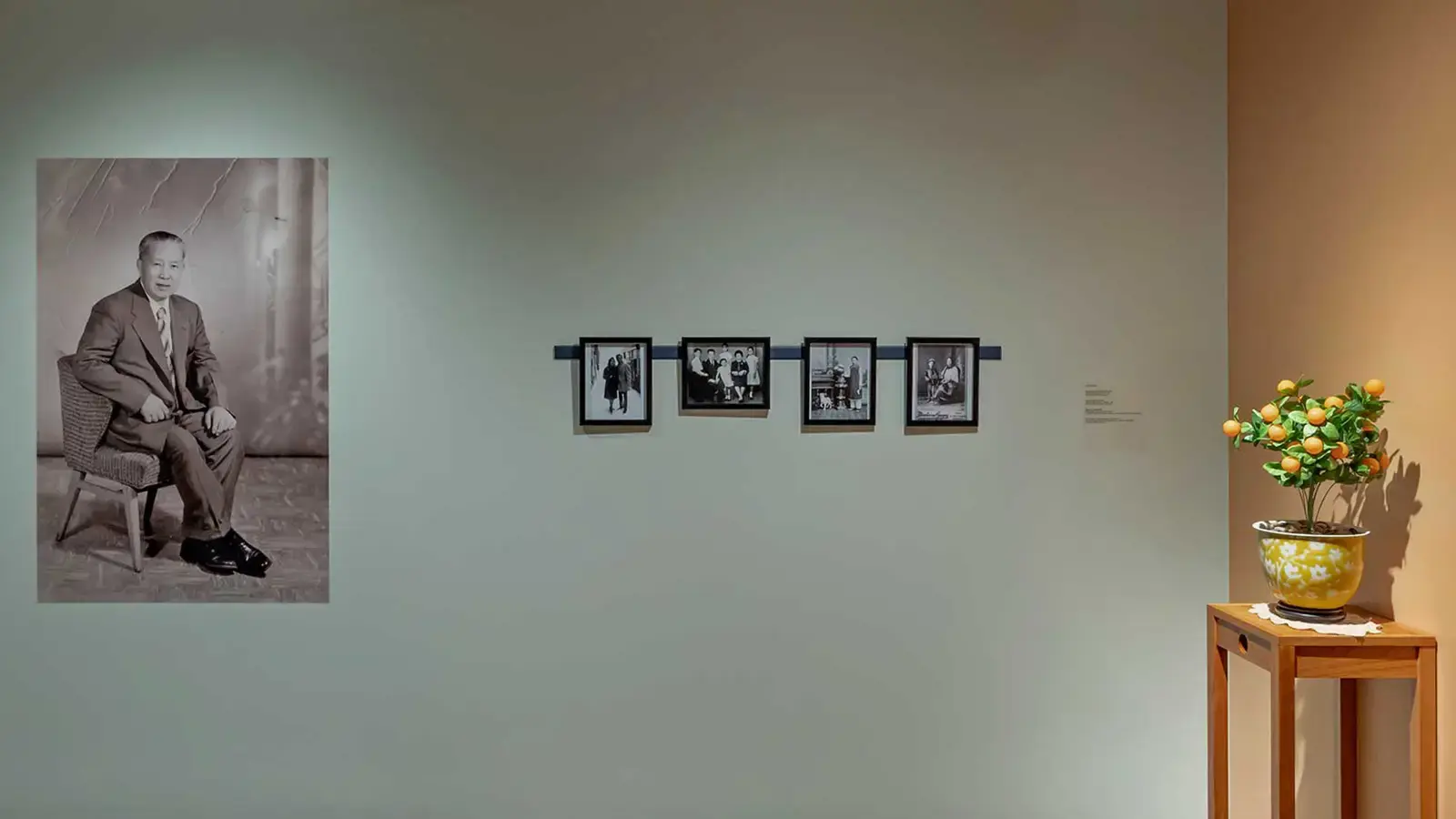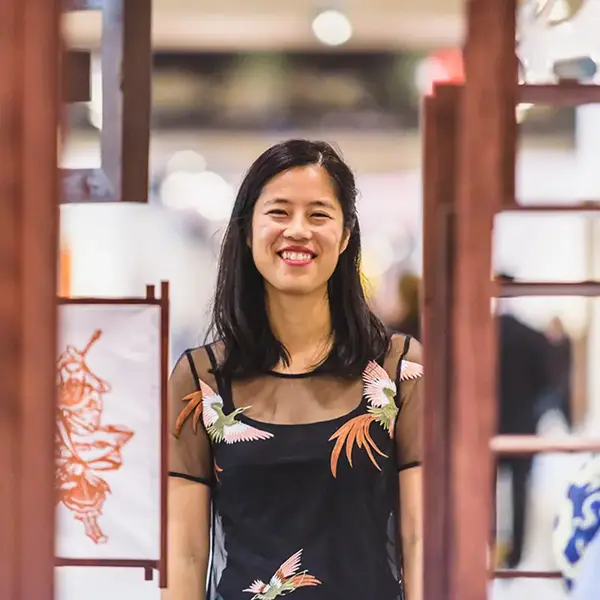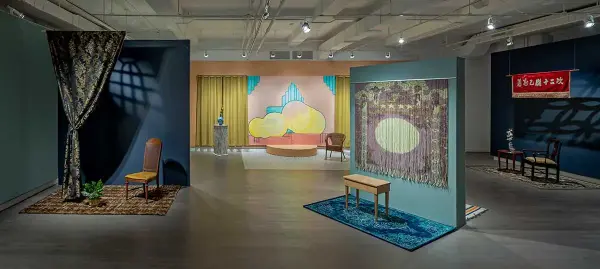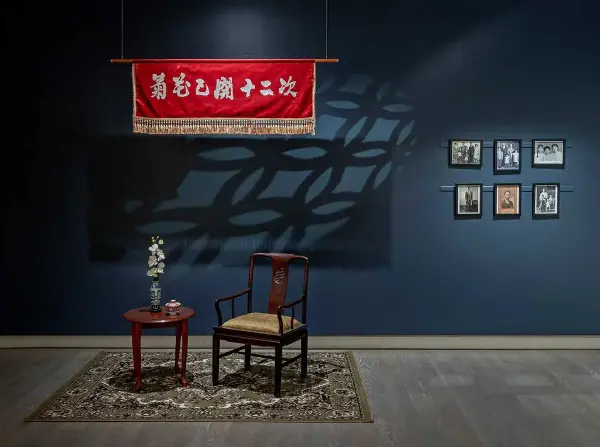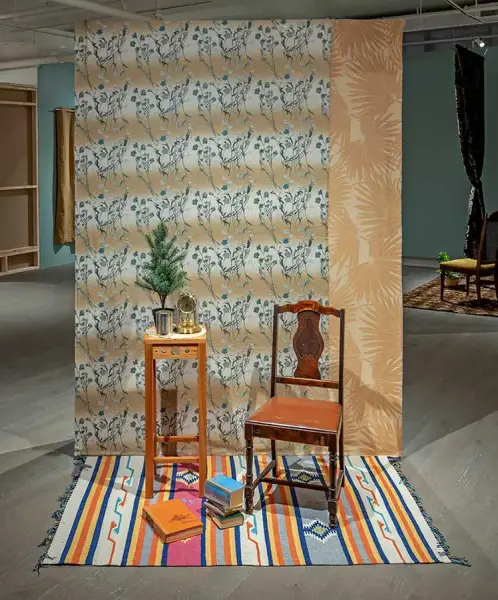the chrysanthemum has opened twelve times
Montréal-based artist Karen Tam creates immersive installations that explore the ways in which the embodied presence of a space and the materiality of objects may offer insight into specific places, histories and communities.
Tam's recent projects investigate the spatial aesthetics of early 20th century North American Chinese restaurants, opium dens, karaoke lounges and curio shops as sites of cultural interaction. Playing with notions of authenticity, she reimagines venues and their material culture, fabricating detailed sets and fake antiques with everyday methods and ordinary materials, bringing them to life.
At the Koffler Gallery, Tam creates a new series of immersive installations to evoke the early Chinese Canadian and other historical photo studios that served Chinese communities in Canada. Her intricate recreations of portrait studio settings and backdrops integrate found and fabricated objects, archival images, 1940s vinyl recordings of Cantonese opera, and mookyu song performances, revealing layered experiences of immigration, displacement and longing.
Tam’s personal impetus for this project is a photograph of her great-grandfather Wong who had migrated to San Francisco in the early part of the 20th century. Like other immigrants at the time, Wong had his portrait taken to be sent along with letters to his family back in Toishan, China. Prompted by this portrait, Tam investigates the emotional and documentary significance of such photographs in revealing the realities of immigration through the implicit tensions of a wishful, reassuring image meant to alleviate separation anxieties by conveying the health and prosperity of the sitter.
Early Chinese Canadian studio photographers and their subjects actively shaped the representation of Chinese identity in North America. Retracing their overlooked existence and restaging the physical environments of these portrait studios, Tam’s installations attempt to piece together and embody absented historic narratives. Furthermore, they seek to evoke similar personal experiences in viewers, positioning these small constructed settings as sites where memory is both encountered and created.
Image at top: Karen Tam, the chrysanthemum has opened twelve times (installation detail), 2020. Photo: Toni Hafkenscheid.

